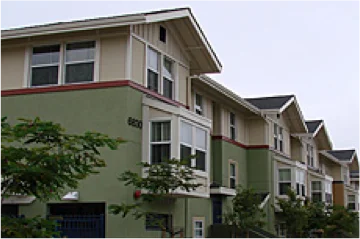Projected Housing Needs - Regional Housing Needs Allocation
Housing element law recognizes the most critical decisions regarding housing development occur at the local level within the context of the periodically updated general plan. The RHNA Plan requires local governments to balance the need for growth (including the need for additional housing) against other competing local interests.

While land-use planning is fundamentally a local issue, the availability of housing is a matter of statewide importance. The RHNA process maintains local control over where and what type of development should occur in communities, while providing the opportunity for the private sector to meet market demand. The RHNA Plan process requires local governments to be accountable for ensuring that projected housing needs can be accommodated. It also provides a benchmark for evaluating the adequacy of local zoning and regulatory actions in order to ensure each local government is providing enough appropriately designated land and opportunities for housing development (based on the need).
Government Code
The element shall contain an analysis of population and employment trends and documentation of projections and quantification of the locality’s existing and projected housing needs for all income levels. These projected needs shall include the locality’s share of the regional housing needs in accordance with Section 65584 (Government Code Section 65583(a)(1)).
Requisite Analysis
Housing-element law requires a quantification of each jurisdiction’s share of the regional housing need as established in the RHNA-Plan prepared by the jurisdiction’s council of governments.
The RHNA is a minimum projection of additional housing units needed to accommodate projected household growth of all income levels by the end of the housing-element’s statutory planning period. Each locality’s RHNA must be segmented into four income categories. The RHNA should be listed in the housing element as follows:
| Regional Housing Needs Allocation | |
|---|---|
| Income Category | New Construction Need |
| Very Low (0-50% of AMI) | |
| Low (51-80% of AMI) | |
| Moderate (81-120% of AMI) | |
| Above Moderate (more than 120% of AMI) | |
| Total Units | |
Jurisdiction RHNA Credit for New Housing Units Since Start Date of RHNA Projection Period
The jurisdiction authorized to permit a particular residential development may take RHNA credit for new units approved, permitted, and/or built since the start date of the RHNA projection period.
A jurisdiction may take RHNA credit for units built on sites controlled by an exempt state, federal, or tribal nation entity (e.g., college/university, military, recognized tribe) as long as the local government is responsible for reporting the new units to California Department of Finance in their annual DOF housing unit survey.
To credit units that are affordable to very low-, low-, and moderate-income households toward the RHNA, a jurisdiction must demonstrate the units are affordable based on at least one of the following:
- Actual sales prices.
- Actual rents.
- Subsidies, financing, or other mechanisms that ensure affordability (e.g., the development used funding from the state Multifamily Housing Program, federal HOME program, or low-income housing tax credits).
For projects approved, but not yet built, the jurisdiction must demonstrate the units can be built within the remaining planning period and demonstrate affordability to very low- or low-income households as follows:
| Units Approved, Permitted, and/or Built | |||||||
|---|---|---|---|---|---|---|---|
| Project Name | Status Approved/ Permitted/Built | Units by Income Level | Methodology of affordability determination (1) Sales price (2) Rent price (3) Type of subsidy | ||||
| Total Units | Very Low | Low | Moderate | Above Moderate | |||
| Remaining Need Based on Units Built/Under Construction | |||||||
|---|---|---|---|---|---|---|---|
| Income Category | A | B | A minus B | ||||
| New Construction Need | Units Built, Under Construction, or Approved | Remaining Need | |||||
| Very Low (0-50% of area median income) | |||||||
| Low (51-80% of area median income) | |||||||
| Moderate (81-120% of area median income) | |||||||
| Above Moderate (over 120% of area median income) | |||||||
| Total Units | |||||||
| New Construction/Replacement Costs | |
|---|---|
| Cost/Fee Type | Cost per Unit |
| Land Acquisition | |
| Construction | |
| Financing/Other | |
| Total Estimated Cost per Unit | |

